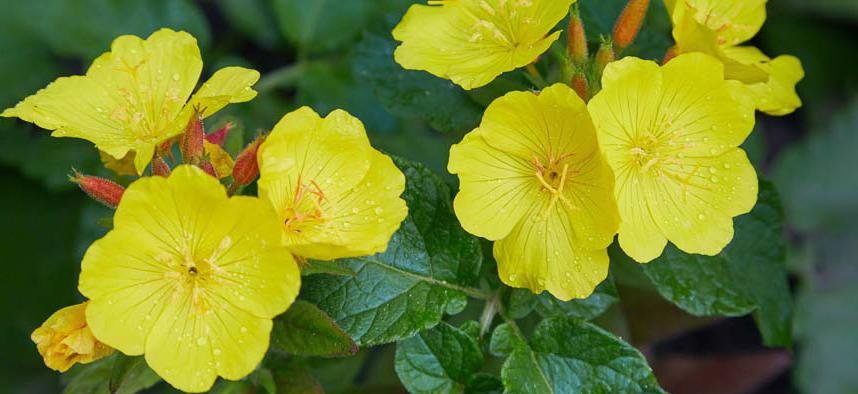
Evening Primrose
Common Evening Primrose (Oenothera biennis) is part of the Oenothera genus that contains an astonishing 145 species. It is thought that may have come from the Greek for “wine scenting” as the plant’s roots were used for this purpose.
This species of Evening Primrose is used for medicinal purposes and is also known as Evening Star, Fever-plant, Weedy Evening Primrose, and Sun-drop.
In addition, Common Evening Primrose (and many other Oenothera species) has become popular with gardeners in many countries thanks to their prolific, showy flowers.
The History of Evening Primrose
Evening Primrose has been used for centuries to ease a range of symptoms and conditions.
In the US, Native Americans used this plant in poultices to treat and soothe wounds, skin inflammation, and bruises. The leaves were ingested to ease gastrointestinal problems and sore throats, and root preparations were favored to treat hemorrhoids. A tea was made for use as a tonic and stimulant.
By the 17th Century in Europe, this herb was so widely used for such a diverse range of medical conditions that it became known as “King’s Cure-all”. Evening Primrose was also been used in cooking as the root can be cooked and the seeds are a good substitute for poppy seeds and can be added to various dishes.
Related: How To Treat Gastrointestinal Disorders With Evening Primrose
Where This Plant is Found
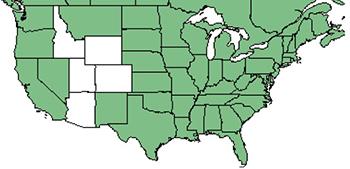 Most Oenothera species are native to North and South America. Others are native to parts of Europe and Asia.
Most Oenothera species are native to North and South America. Others are native to parts of Europe and Asia.
It is thought that American species were introduced into Europe and elsewhere from the 17th century where they became naturalized. There are some 15 species in the United Kingdom, 4 of which are native and common.
How to Identify Common Evening Primrose
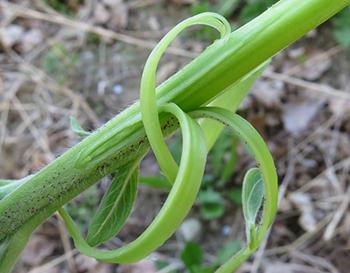
As the focus here is on Oenothera biennis, the identification details will be limited to this species rather than Evening Primrose generally.
This plant is biennial and can reach 6 feet / 1.8 meters in height. It does not usually flower until the second year of growth and only grows leafy stalks in year one. Breaking the plant down can be helpful with identification:
- Stems and shoots: Young shoots are often bright red at the base where they attach to the stem.
When the stems begin to grow, they are upright and woody.
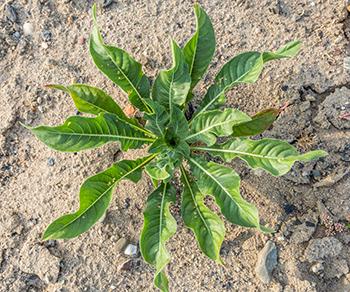
The lower section of the stem is hairy and maybe tinged with purple.
- Leaf: Young plants grow as low rosettes of leaves in the first year. Leaves are attached by short stalks and are wavy and thin.
They have a prominent central vein underneath and are narrow, oval, and taper to a point at each end.
Some leaves may be slightly toothed.
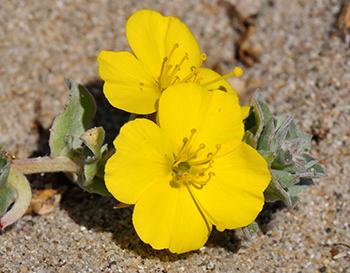
- Flower: Flowering season is late spring to late summer and this plant is self-pollinating and attracts bees, butterflies, and moths.
Blooms form at the tips of the main branches and are large (1 – 2 inches / 2 ½ – 5 centimeters in diameter) and bright lemon-yellow in color.
Each flower has four, bi-lobed oval petals and an x-shaped stigma with for branches. The flower blooms in the evening and dies by midday the following day, hence the name.
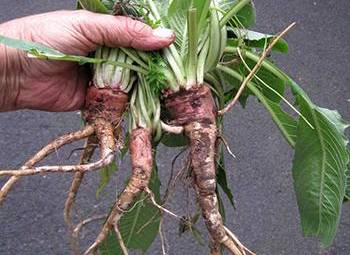
- Root: The roots of the Common Evening Primrose are fleshy, yellow taproots.
Some of them look like parsnips as they can be as wide and similar in shape.
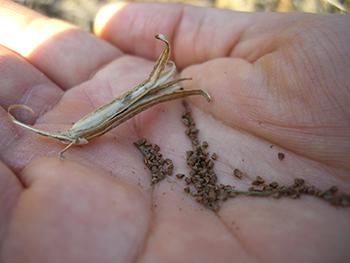
- Fruit & seeds: This plant does not have fruit in the usual sense. It is more a capsule or cylindrical pod that forms after the flower is spent.
The pod is about 1 inch / 2 ½ centimeters long and is divided into 4 chambers. It splits open when it is mature and releases in the region of 180 reddish-brown seeds. The plant dies after setting the seed.
The plant height; bloom color and size; leaf shape, color, and arrangement; and appearance of the stem all help to identify this species of Evening Primrose.
How to Grow Evening Primrose
This plant is self-sowing. If left to their own devices, one or two plants will turn into a sizeable colony after a few years even though each plant only lasts two years.
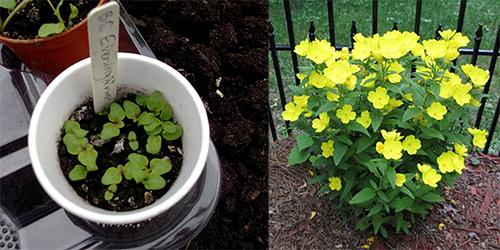
Alternatively, you can buy an established plant and benefit from its second year and enjoy the flowers.
Whether you plant them, or they plant themselves, seeds germinate in spring if they get light and are not under 5 millimeters or more of soil. It’s best to simply scatter them over bare ground.
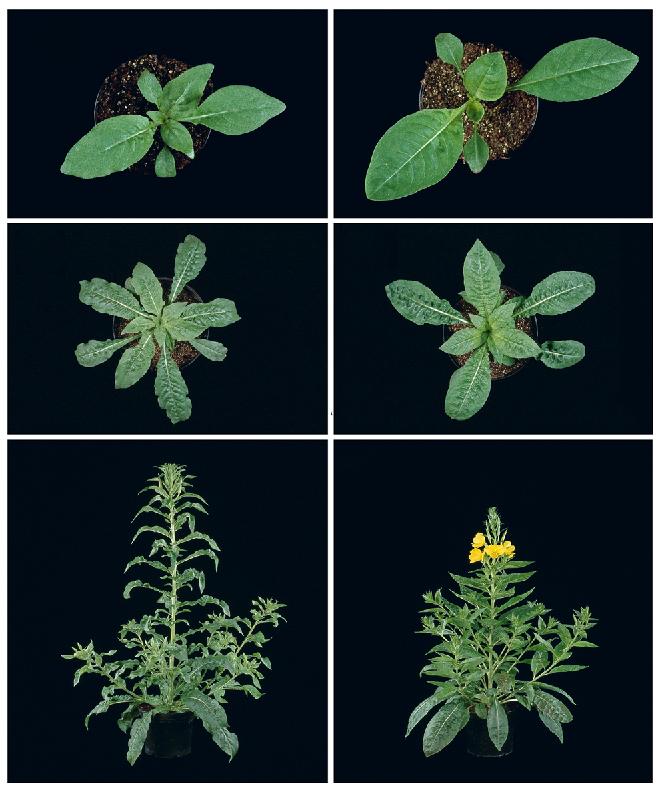 If you are using seeds you harvested, placing them briefly in hot water improves germination rates. Evening Primrose can be planted in partial shade, but full sun is preferable. In terms of soil, this plant does best in well-drained sandy or loamy soil with any pH level. You don’t need to use organic matter or fertilizer but if you do the plants will do extremely well. They also don’t need much water.
If you are using seeds you harvested, placing them briefly in hot water improves germination rates. Evening Primrose can be planted in partial shade, but full sun is preferable. In terms of soil, this plant does best in well-drained sandy or loamy soil with any pH level. You don’t need to use organic matter or fertilizer but if you do the plants will do extremely well. They also don’t need much water.
In terms of pests and diseases, this plant is a popular meal for Japanese beetles, leafhoppers, and Lygus bugs. They can also be prone to leaf spots and powdery mildew.
If you want to learn more about how to grow your own Evening Primrose, this comprehensive guide will help. It is completely free and you can find it here.
How to Harvest This Plant
As with other plants, different parts of Evening Primrose should be picked or harvested at different times.
- Flowers: The flowers should be picked when they are fully open. Remember they only last a relatively short time so don’t delay past mid-morning.

- Roots: These are at their sweetest and most succulent in spring in the second year of growth. You can harvest in the first year; they won’t be as large, but they will be more tender.
- Leaves: Leaves can be harvested in both the first and second year of growth. However, they are more potent during the flowering season in year two.
- Seeds: Collect the seed pods once they begin to crack because they are drying out and before they open fully. It’s easy to pour the seeds out of the pods once they have dried and opened fully.
The leaves, flowers, and seeds should be thoroughly dried. The roots should be carefully washed before you cut them up and cook them or dry them.
What is Common Evening Primrose Used for Today?
The principal active ingredients in Common Evening Primrose seeds are omega-6 fatty acids. Perhaps the most valuable one is gamma-linolenic acid or GLA. This plant is used for the alleviation of:
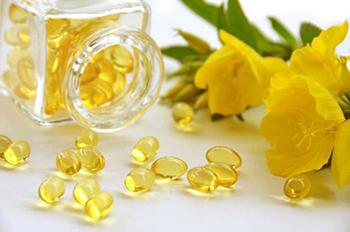
- Premenstrual syndrome
- Atopic dermatitis (a form of eczema)
- Rheumatoid arthritis
- Osteoporosis
- Menopause symptoms
- Breast pain.
It may also boost the immune system and help to regulate blood pressure.
There are several forms that you can obtain Evening Primrose.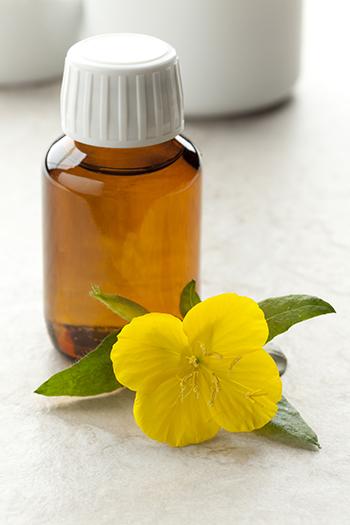
- Oil: The oil is made from seeds and it can be taken orally in the form of capsules or applied topically for skin problems.
- Tea: Tea consists of dried flowers and leaves.
- Infusion: This preparation makes use of the leaves, flowers, buds, and even the stalks.
- Infused oil: Leaves, flowers, and stalks are placed in oil and left to infuse.
- Seeds: Roasted whole or ground seeds can be added to foods.
- Tinctures: These are like infusions but use an alcohol base rather than oil.
Which form you choose will be determined by the reason you want or need to use it! It should be noted, however, that there is either no or inconclusive clinical proof of the health value of Evening Primrose, there is a great deal of anecdotal evidence from several continents that points to the benefits it offers.
Related: Similar to Morphine: The Best Natural Painkiller that Grows in Your Backyard (Video)
What Parts of The Plant Are Used in Remedies?
Almost the entire Evening Primrose plant is edible and can also be used for health remedies or cosmetics: roots, leaves, flowers and buds, and seeds.
A DIY Evening Primrose Recipe
Many people opt to use Evening Primrose Oil. Extracting the oil from the seeds is complex, slow, and requires an enormous number of seeds for not all that much oil. As a result, buying oil is a better option.
One of the easiest ways to benefit from oil from Oenothera biennis is by taking capsules that can be purchased from health care outlets. However, you can also apply the oil directly to your skin to boost skin health and address a host of issues including inflammation, dryness, wrinkles and fine lines, and acne. You could also make DIY face cream.
Ingredients
- 12 milliliters / 0.40 ounces Evening Primrose Oil
- 12 grams / 0.40 ounces Shea Butter
You can increase these quantities as you like, but the ratio must be 1:1.
Method
- Place the Shea butter into a bowl
- Beat it with a small whisk to soften it a little (do not heat Shea Butter)
- Add the Evening Primrose Oil to the Shea Butter
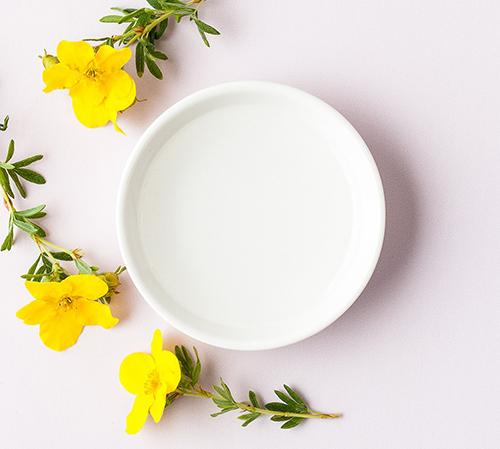
- Whisk the oil into butter until it is thoroughly mixed
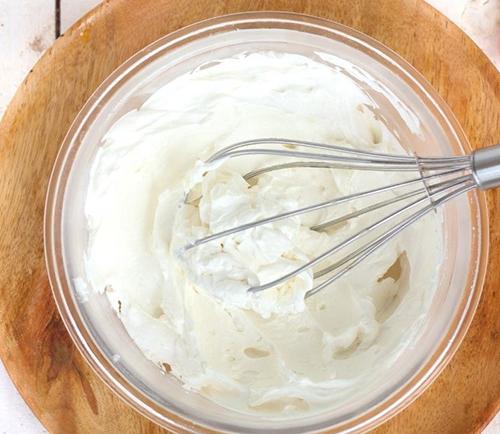
- Spoon the mixture into a suitable container that has a lid.
- Label and date the container.

There is also the option to add other essential oils to add other properties or alter the fragrance.
Application
- Dab a small amount on the skin
- Gently massage it in
- Apply the DIY moisturizer at night before you go to bed.
The only drawbacks are that you need to:
- Use this oil for several months before you will notice a significant change
- Get used to the scent which is quite pungent: a peppery, smoky smell.
Dosage
There have been very few clinical studies in terms of dosages for Evening Primrose. Trials that were carried out used a low dose: 1 – 8 grams daily for adults and half that dose for children. This was with oil that contained 8 – 10% gamma-linolenic acid.
However, in light of the lack of clinical data and the different preparation types and compositions, it is recommended that you use these products according to the directions provided by the manufacturer or under the guidance of your healthcare practitioner.
On a general note, it is suggested that you begin at a lower dose and build up gradually.
How to Preserve This Plant
The leaves, flowers, seeds, and roots can be kept for up to six months if they have been thoroughly dried after harvesting.
Spread the leaves, flowers, seeds, or pieces of washed root out on a paper towel, a clean dishcloth, or a drying rack in a single layer. The area must be well ventilated and warm. Turn the plant material over every few days so all of it is exposed to air.
It’s also essential that dried plant material is stored correctly. It must be kept dry or mold will develop, and the Evening Primrose will all have to be thrown away.
What Plants Resemble Evening Primrose?
There is some name-related confusion between the Evening Primrose and the Primrose (Primula vulgaris). These two have nothing in common at all.
The true confusion lies in differentiating different species of Oenothera. As mentioned, there are many species of Evening Primrose, and examining each would be impractical here. However, it may be helpful to look at the most common and/or popular varieties.
- Oenothera berlandieri / Mexican Evening Primrose is a perennial that spreads and only reaches a height of 18 inches / 46 centimeters.
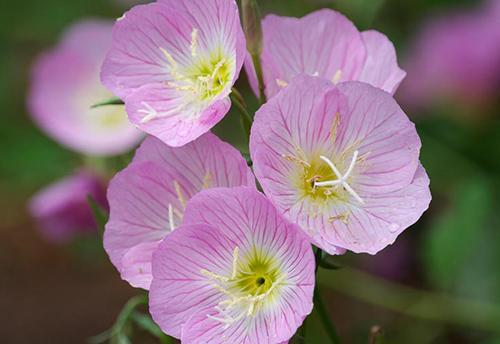
- Oenothera speciosa / Showy Evening Primrose grows to a maximum of 24 inches / 61 centimeters. Unlike most of these plants that have yellow flowers, this species has pink or white and pink flowers.
- Oenothera pallida / White Evening Primrose has, as the name suggests, white flowers. This biennial has dark green leaves and grows to a height and width of 12 inches / 30 centimeters.
- Oenothera laciniata / Cut-leaf Evening Primrose looks the most like Common Evening Primrose. The main difference is in the leaves. Common Evening Primrose leaves have smooth edges but O. laciniata has wavy, irregularly lobed leaves.
- Oenothera parviflora / Northern Evening Primrose has leaves that are narrow and both thicker and smoother than those of Common Evening Primrose.
- Oenothera pilosella / Meadow Evening Primrose is differentiated by the soft hair or fuzz that appears on the upper part of the stems
Given the differences are small and can be overlooked, if you are unsure you should rather check with someone who knows plants, including Oenothera, well.
Warning and Cautions
Evening Primrose is generally considered to be a low risk when it comes to remedies made from it. However, there are certain individuals that should not use it because there is no or insufficient evidence that it’s safe to do so:
- Children
- Pregnant and breastfeeding women
- People on medication for high blood pressure
- Diabetic patients who are on medication
- Those with bleeding disorders
- Individuals with neurological or psychiatric disorders
- Those on HIV medications
- Patients taking nonsteroidal anti-inflammatory drugs.
It’s important to keep in mind that some individuals may experience an allergic reaction to Evening Primrose. Adverse reactions are more likely to occur with the oil than other forms. Some sides effects linked to the use of the oil have also been reported. These include skin breakouts/acne, gastric distress, headache, and mood changes.
In conclusion, as with anything medicinal you plan to ingest regularly, it’s always wise to check with your health and wellness practitioner before you start!
You may also like:
 God’s Pharmacy: 10 Medicinal Plants from the Bible
God’s Pharmacy: 10 Medicinal Plants from the Bible
The US Army’s Forgotten Food Miracle (Video)
How To Make Fire Cider The Ultimate Natural Remedy To “Burn” Your Cold Away

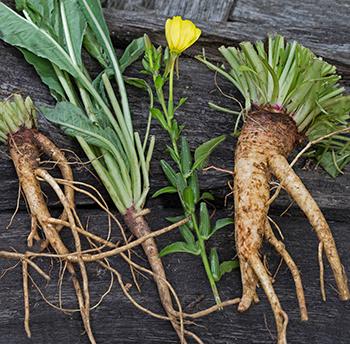
Evening Primrose was my introduction oil and changed forever my care and treatment for my body. It has been a lifechanger for me since I began menopause several years ago. I’ve learned and encourage others to learn how their body responds to different plants so they can align themselves with nature for the greatest benefit. Thank you for bringing so much knowledge on these beautiful plants to us on a regular basis. You are a gift! Love and light… Moorlifeahead.
Evening primrose and Shea Butter oils turn rancid quickly. It would be best to keep this refrigerated.
you need to incorporate a search bar to help find articles and items of interest. thank you
What is not clear in this article is whether the other Evening Primrose cultivars of the Oenothera species are medicinal as well, such as Oenothera Speciosa/Showy Evening Primrose.